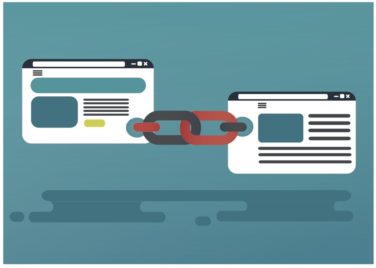While the trend is still in its nascent stages, digital technology is driving significant disruption in healthcare, and its impact will be far-reaching and long-lasting. Two areas where this transformation is visibly underway are digital medical devices and prescription software applications—and these trends intersect.
Advances in technology enable the miniaturization of medical devices, and this is happening on both the consumer and medical professional side. An offshoot of these smaller devices is that a new generation of injectors, monitors, and other tools are losing their screens, often leveraging smartphones to replace them. Many of these new devices also use Bluetooth technology to offload some of the software functionality from hardware, often moved to the cloud. In many cases, the software becomes an extension of the device; in others, it’s the product. These types of applications are known as “Software as a Medical Device,” or SaMDs.
As consumers are interested in taking greater control over more aspects of their healthcare, big brands such as Apple and Google are responding by incorporating elements of medical devices into their consumer products. At the same time, pharmaceutical firms and big companies in the payer/provider space—the Kaisers, Walgreens, and Johnson & Johnsons of the world—are looking for new ways to simplify their offerings by putting their customers/patients at the center of the experiences they provide.
Companies already entrenched in the medical device space are realizing they must start competing in the consumer sphere. People can now purchase devices such as the Apple Watch that give them faster, easier, and cheaper access to some of the same capabilities provided by expensive medical devices typically found in a hospital. At the very least, makers of traditional medical devices will be compelled to provide simpler, more user-friendly applications.
Journey to Consumer Control
The payoff for consumers ultimately will be more choice and control, but there’s still a long way to go. Being able to monitor your heartbeat via a watch is one thing, but the average person still doesn’t have access to their own medical records. As consumers get more empowered with access to their own data and greater visibility into what they are paying for things, economic supply-and-demand forces will begin to exert more influence in healthcare pricing as consumers will then be able to shop around.
On the healthcare provider side, digital devices create new opportunities around cost control, patient compliance, improved outcomes, and increased analytical firepower—especially as disparate medical devices become more and more connected.
Already, technology is changing some aspects of the hospital experience. Patient monitoring is a good example as smaller, wireless devices mean monitoring that once had to be done in a hospital can now be done at home. Implications of this include:
- Freeing up beds sooner means hospitals can treat more patients, potentially increasing productivity and decreasing costs.
- Visibility into a patient’s condition can be maintained for a longer period of time at a lower cost, possibly preventing or pre-empting the need for emergency readmittance.
- Remote patient monitoring boosts engagement and improves adherence to treatment.
- At-home recovery results in both faster recovery, lower risks, and better mental health, according to numerous studies.
As the use of remote patient monitoring grows, there will be accompanying growth in the volume and value of the data it collects. As large, “big data” databases are compiled, researchers, healthcare providers, and medical device suppliers will be able to use artificial intelligence and machine learning to improve predictive capabilities, refine protocols, and identify opportunities for new treatment methodologies.
In the case of existing digital medical devices, such as injectors and prosthetics, data is already being exchanged bilaterally between providers and patients, which can significantly improve the patient experience. Two-way data exchange is also key to the future of telemedicine, where growth is being driven by the ubiquity of smartphones.
Software is Where the Real Action Will Be
Prescription apps—SaMDs—are one of the most interesting aspects of digital disruption in healthcare, and this is an area where the FDA has signaled some willingness to fast-track promising developments. The trend is playing out on three fronts simultaneously.
1. Pharma’s Interest in Prescription Apps: Pharma invests tremendous amounts of time, money, and resources to develop a new medicine or therapy and bring it to market. Eventually, though, it goes off patent and faces competition from cheaper generic versions. Historically, companies have protected their investment by making changes to formulations when they go off patent, then re-patenting the new product. Recently, however, some pharma companies have begun exploring opportunities to expand the staying power of existing drugs by pairing them with a digital product, such as an app to track or improve patient compliance. Expect to see more of that going forward.
2. Digital Therapeutics Being Paired with Physical Devices: This can be as simple as an application that reminds a patient to take an action, like swallowing a pill. A digital therapeutic helps ensure a patient does something they were supposed to do, and it tracks data related to that action. Often, patients don’t have direct connections with drug providers. Digital therapeutics in the form of an app associated with a drug can help improve compliance and dosage accuracy while providing that missing direct connection. Even though personally identifiable information (PII) is not collected, and the data is not used for marketing, digital therapeutics can facilitate notifications about things such as recalls and changes to dosage or potential interactions simply by updating the app.
3. Pure Digital Therapeutics: This involves the use of software to create habits, trigger behaviors, and train brains. It presents an alternative approach to diagnose and treat a wide range of conditions. Although SaMDs are software, developers seeking FDA approval of their products must follow a much more stringent process than regular software developers. The process is defined by a Quality Management System (QMS), which is specified and certified by ISO 13485, an international standard that defines how medical devices are built. The FDA has already approved the first mobile SaMD for the treatment of substance abuse disorder from Pear Therapeutics and Sandoz. Pear also recently initiated a Phase II proof-of-concept study for a prescription digital therapeutic it has in development for schizophrenia.
Going forward, it’s likely the focus on digital disruption in healthcare is going to shift away from hardware and toward software.









